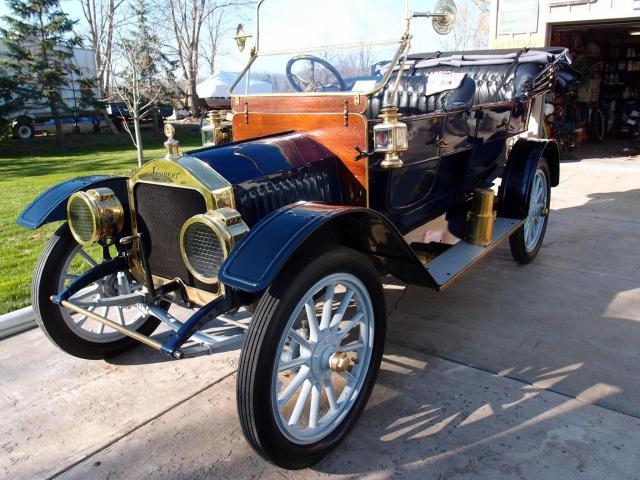1912 Lambert Model 66 5-Passenger Touring
- Brand: Lambert
1912 Lambert Model 66 5-Passenger Touring
John William Lambert is not a household name in motoring history but perhaps he should be. In 1891 Lambert experimented with a three-wheel gasoline buggy and began his attempt to market his creation. The Anderson, Indiana resident did not have much success despite actually printing a brochure offering his vehicle at the economical price of $550. This fact would put Lambert as the first American to build a gasoline motorcar.
Lambert, discouraged by his lack of customers, turned his attention to stationary engines and started the Buckeye Manufacturing Company. However, the automobile bug was not out of Lambert and in 1895 he announced he would soon produce a motorcar. Not until 1898 did one materialize but just in rough prototype form. In 1902 he did finally produce a viable auto under the Union name. Ultimately a Lambert branded car appeared on the market in 1906.
Offered in 1, 2 and 4-cylinder engine models the Lamberts all relied on a friction drive transmission. The simple friction drive unit comprised of a large solid flywheel on the end of the crankshaft and a perpendicular friction wheel. To engage drive the friction wheel was pressed against the flywheel. The wheel could be positioned along the radius of the flywheel to change ratio and moved over center for reverse. This system, though primitive, had its place in the market.
1909 saw the last of the two-cylinder Lamberts and for 1910 five different four-cylinder models were offered. Into the teens Lambert began to focus more on commercial production and the Lambert passenger cars ceased production.
This 1912 Model 66 is a good example of Lamberts' more refined product. The four-cylinder engine makes 35hp and rides in a 112" wheelbase chassis. Drive is through the before mentioned friction system.
Descriptions & Pictures by bonhams & bringatrailer
| Specification | |
| Production Start | 1912 |
| Country of origin | USA |




































